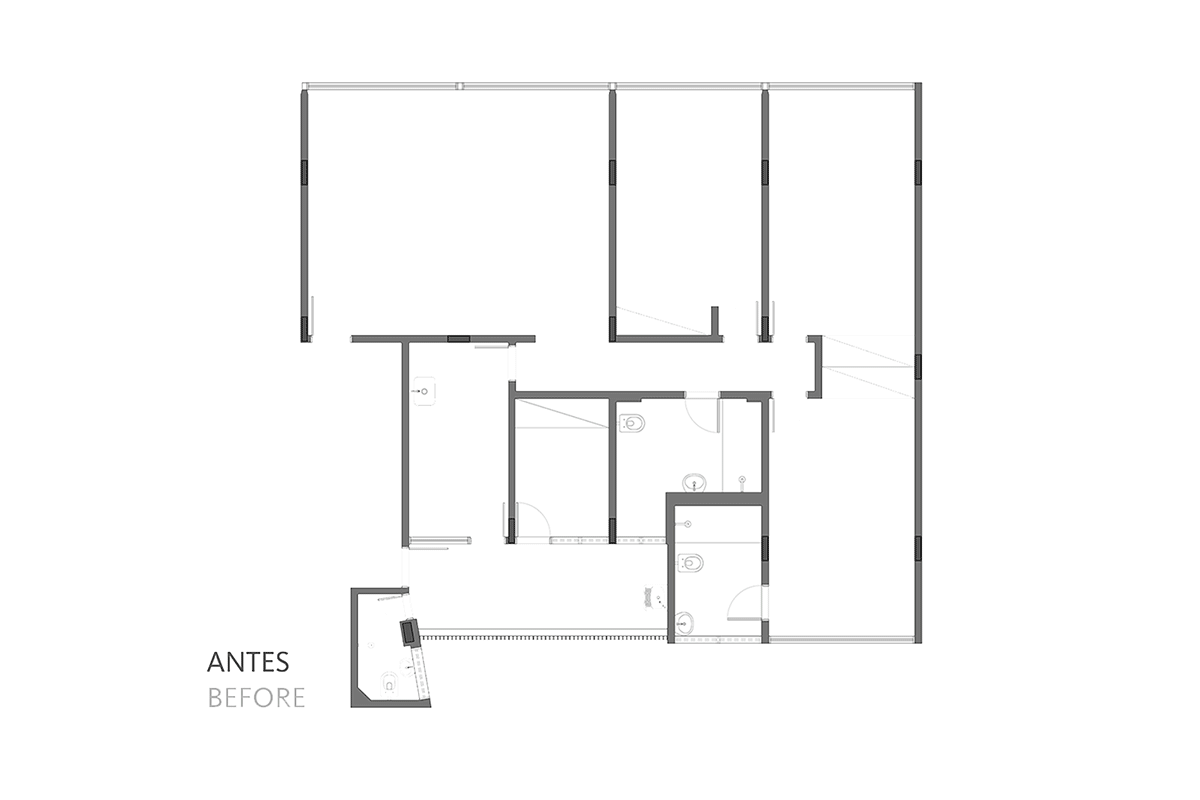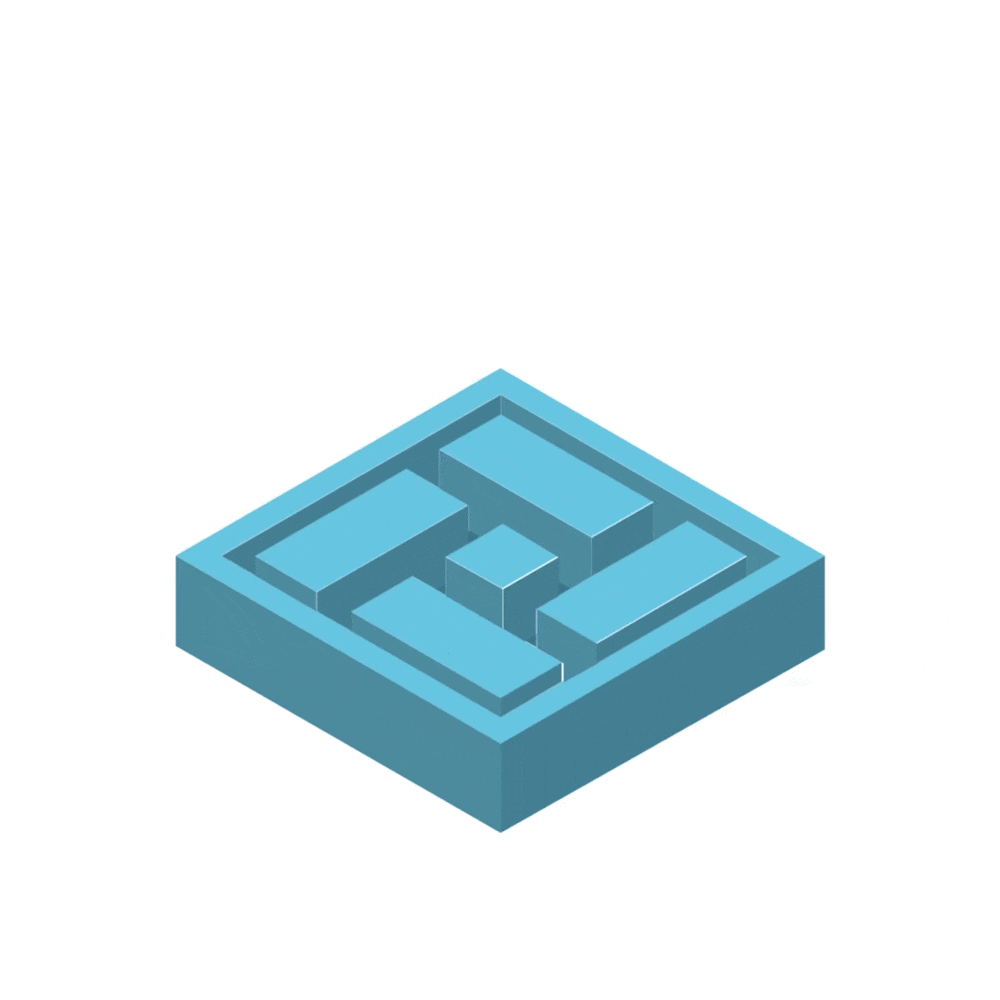在尊重传统的同时创造新的东西总是一种乐趣和挑战,特别是在像巴西利亚这样的城市,遗产方面来自一个非常近的时代。所发现的公寓因其原始设计几乎完好无损而脱颖而出。这座60年代的建筑位于该市最古老的街区,南阿萨。
It is always a pleasure and challenge to make new things while still respecting tradition, especially in a city such as Brasília where the heritage aspect comes from a very recent age. The apartment found stood out for being practically intact in relation to its original design. The building from the 60s is located in the oldest neighborhood in the city, Asa Sul.

在这个项目中,我们很幸运地与一个重视这些方面并仍然愿意尝试新的解决方案的家庭合作。这对夫妇对这个项目的最大动机是希望在城市的中心区域为家庭建造一个高质量的空间。准则很简单:开放性、尊重预算、重视当地生产者和这个地方的历史。
In this project, we were lucky to work with a family who valued those aspects and still opened to experiment with new solutions. The couple’s biggest motivation for the project was the desire to build a quality space for the family in a central area of the city. The guidelines were simple: openness, respect the budget, value local producers, and the history of the place.
在135平方米的面积内,这个公寓的改造项目是基于空间结构的调整,它在社会区域和服务区域之间有一个明确的划分。这样的划分在今天已经过时了,不符合当代人的生活习惯。此外,这些区域的安排和它们的分隔阻碍了从洗衣房向客厅的交叉通风,也阻碍了从同一外墙的光线进入社交和流通空间。
Within an area of 135m², the renovation project for this apartment was based on spatial restructuring, which had a clear division between the social area and the service area. Such division has become obsolete nowadays and does not fit contemporary living habits. In addition, the arrangement of these areas and their compartmentalization prevented the cross ventilation from the laundry room towards the living room and the light from that same facade from entering the social and circulation spaces.
洗衣区的大幅减少是连接厨房和客厅的关键点,从而打开了后部立面的视野,创造了一个新的空间主角:cobogó墙。这个典型的巴西现代主义建筑元素由空心预制混凝土块制成,提供永久的通风,它的灵感来自于阿拉伯文化的遗产–Muxarabis。为此,我们拆除了封闭部分cobogó墙的半墙,并将该元素带到厨房的天花板上,加强了外部和内部之间的联系。这个元素也被证明是有用的,它允许热量排出,也是夜间人工照明的来源,同时隐藏了天花板的装置。
The substantial reduction in the laundry area was the key point that made it possible to connect the kitchen and the living room, thus opening the view to the posterior facade, creating a new protagonist to space: the cobogó wall. Made of hollowed prefab concrete blocks that provide permanent ventilation, this typical building element from Brazilian modernist architecture is inspired by the muxarabis, an inheritance of Arab culture. For that we removed the half wall that closed part of the cobogó wall and brought the element to the kitchen ceiling, reinforcing the connection between outside and inside. The element also proved to be useful by allowing the heat to exit, and also as a source of artificial lighting during the night while hiding the ceiling installations.

这不仅是对城市的现代主义遗产的重视,而且还赋予它新的意义和可能性。由于原始的cobogó作品已经找不到了,解决方案是通过为该项目特别塑造的石膏衬里来手工制作这些作品。这种与当地艺术家和建筑商的合作挽救了首都原有的开拓性建筑精神。
It is about not only valuing the city’s modernist heritage but also giving it new meanings and possibilities. Since the original cobogó piece could not be found anymore, the solution was handcrafting the pieces by a plaster lining specially molded for the project. This collaboration with local artists and builders rescues the original pioneering construction spirit of the capital.
公寓的其他空间方面也需要进行改造:对状况不佳的地板、覆盖物和设施进行总体修复。因此,我们建议更新液压和电气基础设施,以及实施能够更新空间的材料,同时带来舒适的感觉,如新的蓝色瓷砖和镶木地板的恢复。
Other spatial aspects of the apartment also needed a makeover: the general restoration of floors, coverings, and facilities that were in poor condition. Thus, we proposed to update both the hydraulic and electrical infrastructure, as well as the implementation of materials that would renew the space and at the same time bring the sensation of comforts like the new blue tiles and the restoration of the parquet floor.
室内设计呈现出与许多多样化元素的轻盈组合,其中的设计在Ladrilharia的彩色瓷砖、Uso Atelier的设计师Ricardo Theodoro制作的海军胶合板家具、金属架和巴西传统的物品,如来自巴伊亚的乐器Berimbau、典型的乡村装饰的钢丝椅和观赏性植物中有所不同。
The interior design presents a light combination with many diversified elements, where the designs vary in pieces of colorful tiles by Ladrilharia, naval plywood furniture made by the designer Ricardo Theodoro of Uso Atelier, metallic shelves, and objects of Brazilian tradition such as the berimbau, a musical instrument from Bahia, wire chairs typical from countryside decoration and ornamental plants.
Architects: CoDA arquitetos
Area: 1453 ft²
Year: 2020
Photographs: Joana França
Manufacturers: Ladrilharia, Objeto Casa, Primavera Enxovais, Tokstok, Uso Atelier, WS marmoraria
Project Team:Pedro Grilo, Ana Paula Kouzak, Rayan de Sant’Anna
Editorial:Sarah Almeida
Illustrations:Luiza Ceruti
Construction:Pedro Grilo, Ana Paula Kouzak, Rayan de Sant’Anna
Foreman:Paulo Sérgio da Silva
Woodwork:Samuel Antunes
Plasterer:João Batista M. Araújo
City:Asa Sul
Country:Brazil

































